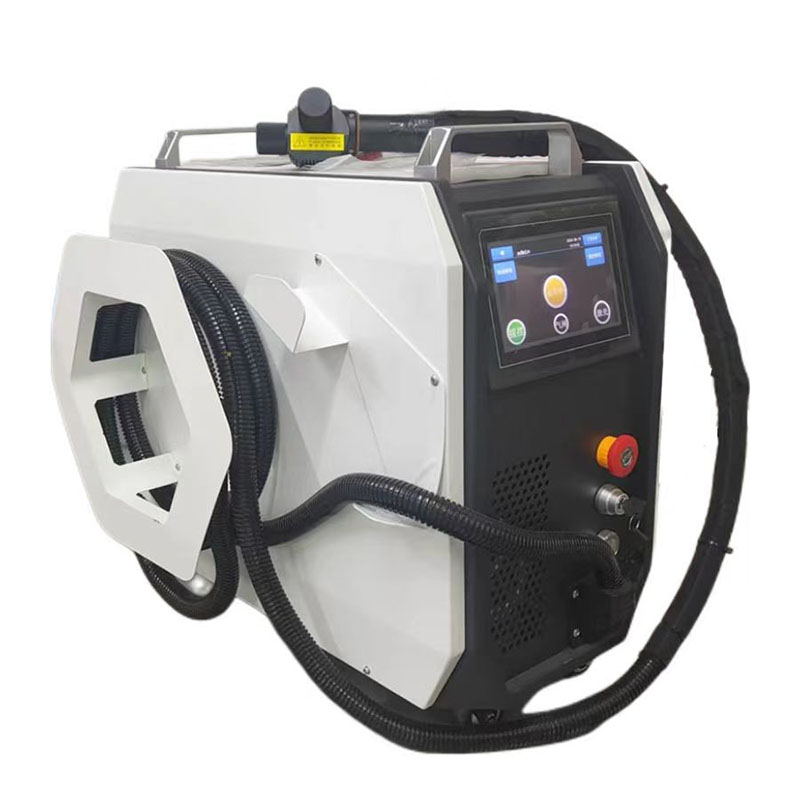Product advantages (Laser cleaning Machine):
| No. | Characteristic | Description | Note |
| 1 | Central wavelength(nm) | 1060—1080 |
|
| 2 | Laser power(w) | 200,300 |
|
| 3 | Fiber length(m) | 5 |
|
| 4 | Cleaning head weight(kg) | 2 |
|
| 5 | Cooling method | Air cooling |
|
| 6 | Operating Environment | Ambient temperature 10-35℃, relative humidity 30%≦RH≦85%, no condensation |
|
| 7 | Power requirements | 220V |
|
| 8 | Overall power consumption (kw) | 1kw |
|
| 9 | Total Weight(kg) | 55kg |
|
Laser is used to remove pollutants on the surface of the object to be cleaned. Since laser has excellent coherence, directionality and brightness, it can produce at least three effects: the vibration effect uses high-frequency laser to impact the surface of the object to be cleaned, and the light beam rotates into sound waves and returns from the lower surface, interfering with the incident wave, thereby generating resonance and breaking the pollutants; the thermal expansion effect uses the difference in the absorption coefficient of the substrate and the surface pollutants for a certain wavelength of laser energy to make the pollutants absorb the laser energy and expand thermally in an instant, forming a large detachment acceleration, overcoming the adsorption force of the substrate on the pollutants and falling off; the optical decomposition and phase change of molecules can make the pollutant molecules vaporize, decompose and evaporate instantly. Under these three effects, laser has the ability to remove surface pollutants. Compared with other cleaning methods, the advantages of laser cleaning are: "green" environmental protection, low labor intensity, non-destructive, fine and precise.
